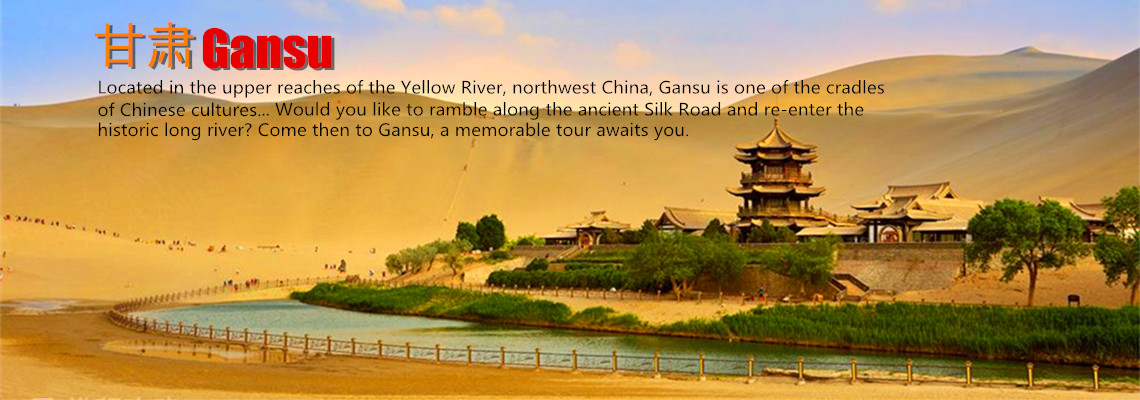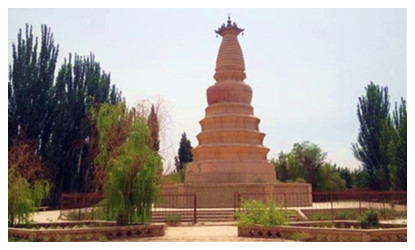
Dunhuang White Horse Pagoda
Dunhuang White Horse Pagoda was built by an eminent monk to commemorate a white horse in 386 AD.It has nine-storage, with a height of 12 meters and a width of 7 meters.Taking the advantage of its geographic location it became a major stop on Silk Road.People repaired the structure in every dynasty, therefore the White Horse Pagoda keeps its original beauty and always take the lead among the tourist attractions in Dunhuang as is regarded as "scenery within the scenery".
repaired the structure in every dynasty, therefore the White Horse Pagoda keeps its original beauty and always take the lead among the tourist attractions in Dunhuang as is regarded as "scenery within the scenery".
History
It was said that Emperor Fu Jian of the Former Qin sent General Lu Guang against the western regions and won completely. When he came back to the capital , he tooke Kumarajiva, the famous translator of Buddhist Scriptures from the Qiuci Kingdom of the western region who used the white horse carrying the Buddhist Scriptures, but the white horse died in Dunhuang. So the White Horse Pagoda was built in memory of the white horse.
In fact, in the long history of Buddhism, along the Silk Road believers had built many temples and caves, in order to pay their respect to those monks who had dedicated their life to the spreading of the Buddhism. The White Horse Pagoda is just one of these buildings and tourists who want to cover the ancient Silk Road will not miss the opportunity to visit it.
Buddhism spread into China from India through Yutian (in Xinjiang Province) of the West Regions and Shanshan 1,000 years ago. Gradually more and more people believed in Buddhism and recorded many events that Chinese monks went to West Regions for Buddhist scriptures or Buddhism spread from the West Regions into China.
In fact, in the long history of Buddhism, along the Silk Road believers had built many temples and caves to pay their respect to those monks who had dedicated their life to the spreading of the Buddhism. The White Horse Pagoda is just one of these buildings and tourists who want to cover the ancient Silk Road will not miss the opportunity to visit it.
What to see?
White Horse Pagoda is grand with 9 floors, 12 meters high, built with adobe bricks, columns outside coated with cob and lime. The basement layer is octagonal and built by laying bricks or stones, faced with 3 meters wide; second to fourth layer present angular overlapping shape; the fifth layer protruding nails around the pagoda, upon the nails are lotus petals; sixth layer is tower body of Tibetan style; and the whole tower pagoda presents lama style of Ming dynasty.
Travel Tips
Add : Bai Ma Ta Village, Danghe Town, south of the Dunhuang City. It is about 2 kilometers away from the center of the city.
Ticket Fee: CNY 15
Opening time: 8:00 - 18:00.



 Ask Questions ?
Ask Questions ?